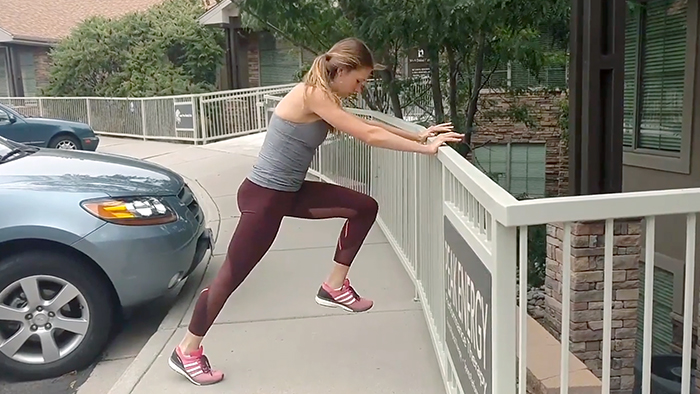Have you ever been told that your glutes are not firing? This common explanation for injuries and gait issues has become overused and oversimplified; if your glutes were not firing, you would not be able to walk upright!
A more accurate description of what is going on is that your glutes are misfiring. The repetitive movements of endurance training do not promote variety of firing patterns of our muscles, and the lack of movement variety can cause the glutes to get “stuck in their ways.” This can cause poor running mechanics, and in some cases even injury.
Rehab specialists will prescribe some excellent activities to isolate and glute function, which is necessary to “turn on” certain muscles that aren’t working like they should. But when running, your glutes do not fire in isolation; muscles in your pelvis, hips and backside need to be able work together for a myriad of movement patterns. Without these helpers, you’ll simply recreate the conditions that turned your glutes “off” in the first place. Therefore a consistent dose of movement variety in the muscles of the hips and glute region will help brain “re-organize” the gluteal muscles’ firing patterns for a better long term solution.
Below is a 3-step process to create that variety and re-coordinate hip function. These steps include complex, dynamic movements that you can plug into your overall training plan based on your ability level. Be sure to take into account your overall athleticism and your rehab progress if you have an injury.
Step 1: Start With Light Skips and Mobility in an Upright Position
If you are coming back from an injury, use controlled, low impact activities that still challenge your coordination and provide variety. Here is a compilation of different skips and mobility work you can incorporate into your training or rehab program. Note the variety of planes that the athletes move in (backward, sideways, and forward). Also note the modifications used for low impact needs and lack of equipment.
Step 2: Progress to Games and Bodywork
Whether you’re healthy or still rehabbing, start playing! Unstructured movements will encourage the brain to fire muscles in random patterns like it used to do on the playground. Your “games” can come in the form of light trail runs, playing games with your kids, shooting hoops, kicking a soccer ball around, or whatever you like. As seen in the video, intensity levels can be modified based on your ability and rehab stage.
Conversely, if you prefer more structure, incorporate into your training regimen a variety of bodyweight exercises. These simple movements will load the lower body and challenge the glutes to coordinate firing patterns in different directions and amplitudes than running does.
Include a heavy dose of backward and lateral movements, and you will expose your hips to many new firing patterns that will shake up old habits. Keep your intensity level fairly high for each exercise and cycle through around 12 different movements. Perform 30 seconds of work followed by 15-30 seconds of rest. Here’s a small sample of lower body activities you can add to your strength program:
Step 3: Lift Heavy
If you’re an experienced lifter and have good technique, challenge your normal routine with heavier weight and fewer repetitions. When the body is challenged with greater load, it tends to “self- organize,” and firing sequences become more efficient.
Think about your last leisurely trail run. You likely weren’t paying close attention to proper running mechanics, as you were simply enjoying your run and being outside. However, if on that lovely run, a hungry lion spotted you and began chasing you, the challenge of the run would have become more imminent. You might not be the most efficient sprinter, but given the emergent situation, your body would have figured out how to get from point A to all points far from the lion as quickly and efficiently as possible.
In this case, the lion represents heavier weights and your sprinting from the lion represents your movement pattern under those heavier weights. When loads become heavier, the body sorts out the most economical firing patterns to move that weight. Of course, this type of intensity should be used with healthy athletes who have experience in the weight room, and not with an injured novice with little weight lifting experience.
When choosing what types of lift to do, make sure you employ a balance of front side, back side, and lateral work so that you challenge the hip region in all directions. Here is a sample lower body strength routine for an experienced lifter:
Day 1: Barbell squats 3 sets of 6 at 70% effort
Weighted lunge-return (lunge forward and then return that leg back to your starting position). 2 sets of 6 each leg at 70% effort.
Day 2: RDL’s 3 sets of 6 at 70% effort
Weighted lateral step ups 2 sets of 6 each leg at 70% effort.
It is important not to isolate glute activities when you’re trying to change firing patterns. Whether you are coming back from injury or hoping to avoid one in the first place, commit to a dynamic movement regimen that allows your glutes to work in concert with other muscles. These activities will shake up old firing patterns that may be causing injury and gait issues. Over time, these various movements will help you feel more coordinated and powerful in your running mechanics, as well as fend off injury.


